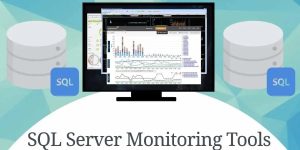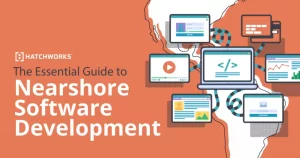Server Performance Monitoring

It doesn’t matter if they are physical or virtual, on-premises or in the cloud: servers are the cornerstones of modern networks. They are where your applications live and where your users and customers store and retrieve data from. This is where server performance monitoring comes in.
Monitoring tools are needed to ensure they are running and have the resources available to do so at peak performance. In this article, we will present some of the main options available and hope to help you choose the best one for your needs.
But before proceeding, we need to define what a server is, as this word can have many different meanings, depending on context. Wikipedia defines a server as “a piece of computer hardware or software (computer program) that provides functionality for other programs or devices, called clients.”
This article is focused on server hardware, physical or virtualized, that hosts applications and services for clients. Of course, there are also monitoring tools that focus on server software, like the internal operating parameters of a database server, file server, or mail server. Many of the tools mentioned here can also do this kind of server monitoring, but this aspect is not the focus of this article.
Frequently Asked Questions about Server Performance Monitoring
What are Server Performance Monitoring tools?
A server performance monitor is any tool that can tell you information about the vital operating parameters of a server. This includes, for example, data such as the CPU Load Average and how much memory is being used on a Windows or Linux server, or the status of the disks on a storage server.
On virtualized servers, these parameters may be relative to the amount of resources allocated to the virtual machine by the system administrator. Some tools can also monitor the performance of the host of the virtual machines, something that comes in handy when trying to determine if degraded VM performance is being caused by the lack of resources on the host site.
Why should you invest in Server Performance Monitoring?
Here are 5 reasons to invest in server performance monitoring:
- Greater availability: many monitoring tools have “trending” features, which can be used to indicate where, and when, problems will occur if action is not taken, helping you avoid outages that may lead to productivity or even financial loss.
- Better resource allocation: constant heavy load may indicate that your server needs more hardware resources (like CPU cores or memory) allocated to deliver the expected performance.
- Enhanced security: a sudden spike in a server load may be a signal of malicious activity, like a DDoS attack. Early detection may give you a chance to deploy measures to mitigate their impact.
- Capacity planning: by having a baseline of the resource usage on your infrastructure, you will be better equipped to make decisions when the time comes to plan an expansion or to pare down resources to save money.
- User experience: by monitoring server performance, you can detect and address issues like high response times that could impact user satisfaction.
What to look for when choosing a Server Performance Monitoring Tool?
There are 5 main features you need to look out for when choosing a Server Performance Monitoring tool.
- The capability to monitor many aspects of your servers at once.
- A centralized display of information from many sensors for better observability.
- Customizable alerts and automated notifications when alerts are triggered.
- Native and automated reporting features.
- A free trial period, so you can attest to how the tool works with your network infrastructure.
How to do Server Performance Monitoring?
There are many Server Performance monitoring tools, from as many different vendors, which may focus solely on a single aspect of the task or offer this capability as a subset of a broader range of features. We present a few of them below, in no particular order.
The best Server Performance Monitoring tools
Paessler PRTG
Paessler PRTG is the Swiss army knife of the monitoring world. PRTG is based on basic monitoring elements called “sensors”. One sensor usually monitors one measured value in your network, e.g. the traffic of a switch port, the CPU load of a server, the free space of a disk drive, and so on.
There are many ways to use PRTG for server performance monitoring. Basic monitoring of Linux and Unix Machines (including mac OS), can be accomplished via SSH sensors that give you the load average, CPU and memory usage. For Windows systems, the WMI Vital System Data sensor offers a broader view including thread, memory, network or pagefile information.
You can also monitor virtual servers, including a full suite of sensors for Hyper-V systems, and also for XenServer and VMWare hosts and virtual machines, Azure Virtual Machines and, of course, Docker Containers.
In all, PRTG comes with more than 250 built-in sensors for a wide variety of tasks, device types, and use cases, so you would be hard-pressed to find something that you can’t monitor. Plus, you can mix and match sensors, and even deploy custom ones, to create monitoring solutions specific to your needs.
The information gathered by PRTG is shown on a centralized dashboard with all the relevant metrics. You can set alerts based on threshold values, with notifications delivered by text (SMS) or email if those values are exceeded. There is also an automatic reporting feature, so you can keep management and co-workers informed.
PRTG runs on Windows Server 2012 R2, 2016, 2019, 2022 or Windows 11, and there are mobile apps for Android and iOS. There is a 30-day free trial of PRTG, with all features available during this period, no credit card is needed.
ManageEngine OpManager
network-monitoring/?utm_source=NetworkKing&utm_medium=Website&utm_campaign=OPM-SerPerfMon” rel=”nofollow”>ManageEngine is a full-featured network monitoring system. It can monitor not only physical and virtual servers, but also your WLAN and WAN, storage devices, generate network visualizations, and even help you with fault management.
The server performance, availability, and health monitoring feature supports for 300 performance metrics such as page read/write, processor queue length, free physical memory, disk I/O, and process queue length through SNMP and WMI protocols. VMware ESX servers can also be monitored, along with Guest OS performance.
OpManager is able to perform Intelligent Event Processing, correlate events, and filter unwanted ones. Notifications can be sent by SMS or email whenever an alarm is triggered, and it is also possible to automatically run an external program or script.
The information gathered by this tool is presented in customizable dashboards with various visualization options. Each user can choose widgets and customize their dashboard based on their specific needs.
ManageEngine OpManager is available for Windows (Windows Server 2008 R2, 2012, 2012 R2, 2016, 2019, 2022) or Linux (Red Hat version 7 to 8.4 / CentOS Stream 8/ CentOS 7 to 8.5). There are also mobile clients for Android and iOS, so you can take your monitoring on the go. There is a 30-day free trial available.
SolarWinds® Server & Application Monitor
The SolarWinds® Server & Application Monitor promises complete monitoring of your server infrastructure, be it on-premises or on cloud platforms, like Azure, AWS, and others.
Data is presented in an integrated, “single-pane-of-glass” dashboard, providing insights into “systems, applications, and infrastructure performance, regardless of where they reside”. This information can be visualized and correlated across the environment, with dynamic base lining to define what is normal operation and what should trigger an alert.
SolarWinds® Server & Application Monitor can monitor servers running all the mainstream operating systems, such as Windows Server (2003, 2008, 2008 R2, 2012, 2012 R2, 2016, 2019), Linux, Solaris, AIX, HP-UX, and Unix. It can also monitor virtualized servers running on Hyper-V, Citrix, or VMWare solutions.
It can also monitor “Infrastructure as a Service” (IaaS) services, like Docker containers, with an auto-discovery feature, and Kubernetes pods. There is also “Platform as a Service” (PaaS) monitoring, with data on CPU, memory, requests, and response time of Azure workloads.
Besides servers, SolarWinds® Server & Application Monitor can also monitor more than 1,200 applications and systems, including Microsoft products such as Active Directory, Exchange, IIS server, SharePoint, Skype for Business, SQL Server, Windows, and others. It is also capable of monitoring and trending the performance of Office 365 applications.
SolarWinds® Server & Application Monitor is available as a 30-day free trial.
Datadog
This powerful tool advertises full observability and increased security for your server environment. Datadog has support for more than 600 data sources and integrations and can collect metrics with a granularity down to one-second resolution.
Its unified server monitoring allows you to investigate server issues down to the individual host level with tag-based metrics and alerts, and identify hidden sources of latency by monitoring server metrics alongside application data.
It can also help you optimize your infrastructure by monitoring CPU and memory metrics to spot underutilized machines and improve application performance by tracking host metrics over time to identify usage trends and overloaded hosts.
The Service Map “unifies observability data from any VM and service”, be it on the cloud or on-premises, offering comprehensive visibility into your applications and their dependencies. The tool can also monitor your resource usage and auto-scale your container instances as needed.
All the data is displayed on dashboards that can be configured to “provide stakeholders with a real-time view of their infrastructure health”, with conditional alerting using a combination of metrics, events, and other data points to avoid alert fatigue, and anomaly and outlier detection features to quickly identify and troubleshoot problematic hosts.
You can try Datadog free for 14 days.
TeamViewer Remote Management
Server monitoring is part of a broader package of solutions offered by TeamViewer called TeamViewer Remote Management, which also includes network monitoring, asset & inventory tracking, patch management, endpoint protection, backup, web monitoring, and more.
With it, you will be able to monitor disk space, disk health, CPU and memory usage, network traffic, online state, and more. There are also software-related features like monitoring Windows processes and services, system updates, the status of antivirus software, and event logs.
You can set custom monitoring policies, with individual thresholds and recipients for alerts, and assign those policies to individual devices or device groups. Alerts can be delivered via instant push notifications on a phone, the TeamViewer Contacts List, or email. There is even an API that allows for the development of a custom monitoring interface without the use of the TeamViewer Management Console.
TeamViewer Remote Management can monitor machines running Windows (7, 8, 8.1, 10 and 11), Windows Server (2008, 2008 R2, 2012, 2012 R2, 2016, 2019, 2022), Linux (Debian-based distributions, on x64 or ARM platforms) and macOS 10.12 (Sierra), 10.13 (HighSierra), 10.14 (Mojave), 10.15 (Catalina), 11.2-5 (Big Sur) and 12 (Monterey), on Intel or ARM (M-series) processors. There is a 14-day free trial available.
Sematext Cloud
As the name implies, Sematext Cloud is a cloud-hosted Software as a Service (SaaS) performance monitoring package. It can show you CPU, memory, disk usage and IO, network, system load, and other server performance metrics. This data can be filtered using tags, hosts, disks, network interfaces, pods, and displayed on “customizable and intuitive” dashboards.
Monitoring is done via agents that collect and report information to the cloud-hosted platform. Those agents run on all the main Linux distributions and are lightweight, taking up as little as 40 MB of RAM and less than 2% of the processing power of a single CPU core. You can remotely monitor applications running on Windows servers, but there is no way to monitor OS-level metrics on the Microsoft platform.
Besides your physical servers, Sematext promises “cloud-provider agnostic monitoring” of essential server, container, and process metrics, with support for all the major cloud providers, such as AWS EC2, Azure, Google Cloud, IBM Cloud, and DigitalOcean, to name a few. It can also collect key container and Kubernetes metrics and events, and auto-detect applications running inside containers.
Sematext is available in three subscription tiers. There is a free basic plan, limited to 3 containers/host and 5 hosts maximum, with a data retention time of 30 minutes. The Standard and Pro plans have monthly prices dependent on how many containers per host you wish to monitor and for how long you wish to keep the collected data. A 14-day free trial of those plans is available.
Nagios XI
Nagios XI is a complete IT Infrastructure Monitoring Tool that can monitor your servers and much more, including applications, services, operating systems, network protocols, and network infrastructure. Its web-based interface is configurable and easy to use, providing at-a-glance access to monitoring information.
It is possible to create multiple users with different levels of access to the web interface, so stakeholders can have easy access to relevant information, but nothing more. As in other tools, in case of outages, alerts can be sent to IT staff and end-users via email or mobile text messages.
One of the highlights of Nagios XI is a robust ecosystem with “thousands of community-developed add-ons that extend monitoring and native alerting functionality”, alongside multiple APIs that facilitate integration with in-house or third-party applications.
Nagios XI is available in two editions, “Standard” and “Enterprise”, and there is a fully functional 30-day free trial. One thing that sets it apart from many other tools mentioned in this article is that it only runs natively under Linux, more specifically distributions like CentOS, RedHat Enterprise Linux (RHEL), Ubuntu, or Debian. However, it can be run on Windows servers using virtualization solutions like VMWare, Virtual Box, or Hyper-V.
Zabbix
Zabbix is a free and Open Source monitoring package that can do a lot, including server, cloud, application, services, and network monitoring into one tool. Besides monitoring server performance and availability, like many other tools listed in this article, it can also monitor configuration changes, alerting when a component, like a network card, is added or replaced, firmware is upgraded, or a serial number is changed.
“Smart thresholds” allow your team to do root cause analysis and anomaly detection, and there is an AI-Based trend prediction system that not only informs you that you will run into performance issues, but also how much time you have left until a threshold is reached.
The alerting system is very flexible, supporting not only SMS and email, but also modern communication platforms like Slack, Microsoft Teams, Telegram, and more. Messages can even be customized according to the type and role of the recipient.
The Zabbix server can only run on Linux, on-premises, or in the cloud. Supported distributions are Alma Linux, CentOS, Debian, Oracle Linux, Raspberry Pi OS, Red Hat Enterprise Linux, Rocky Linux, SUSE Linux Enterprise Server, and Ubuntu, both for x64 and arm64 architectures.
Zabbix may be Open Source and free, but you pay for the technical support. There are five support tiers (Silver, Gold, Platinum, Enterprise, and Global I), each one with different levels of availability, response times, and amount of incidents and support contacts.
Progress WhatsUp Gold
WhatsUp Gold promises to help you “manage your physical infrastructure in the context of virtual machines and workloads”, with data on important metrics such as performance, volume utilization and traffic loads, temperature, and even power usage.
Using “comprehensive layer2 / layer 3 discovery”, this tool claims to “understand the architecture of your network”, eliminating duplicate devices for a more accurate representation of your infrastructure and generating inventory reports on network assets, hardware modules, warranty status, and more “in less than an hour.”
It also allows you to easily generate performance, health, and inventory reports for your cloud resources and infrastructure, letting you quickly determine if an issue is occurring on your remote instances or on your premises.
Progress WhatsUp Gold runs only on Windows Server (2016, 2019, or 2022), but can monitor any SNMP-enabled device. There is a free trial available on the manufacturer’s website, but we couldn’t find out how long the trial period is.
Icinga
Like Zabbix, Icinga is an Open Source monitoring tool packed with features. Originally developed as a fork of Nagios in 2009, Icinga has a web-based interface and is expandable, with plugins, add-ons, and modules available on the Icinga Exchange. The software is also compatible with Nagios plugins available on the Nagios Exchange.
Besides connectivity and system resource monitoring, Icinga can monitor operating system parameters, available updates, logfiles and application health. It is also capable of hardware monitoring, using industry standards like IPMI and Redfish to monitor the temperature, fan speed, network interfaces, and other hardware-specific parameters.
Metrics, such as the availability, bandwidth usage, and errors on every interface, are collected and can be stored on a database of your choice, simplifying tasks such as capacity planning and identification of usage trends. There’s also Logstash integration, providing a powerful log-parsing engine that comes in handy when analyzing hundreds of events.
Icinga runs on Linux (Debian, Ubuntu, CentOS, Fedora, OpenSUSE, Raspbian, SLES, RHEL, and Amazon Linux 2) and also Windows Server 2012 R2 and up. The software is free on most platforms, but some packages (for RHEL and Amazon Linux 2) and support are only available through subscriptions, offered on a three-tier system (Basic, Premium, and Enterprise).
Conclusion
Our favorite server monitoring tool is Paessler PRTG, as it “ticks all the boxes” in our list of desired characteristics. The built-in sensors cover many of the main use cases, without the need to purchase extras. And it is extensible, which means you can deploy third-party sensors, or even develop your own, to cover specific needs.
But more importantly, it streamlines your workflow by enabling you to monitor all of your infrastructure with a single tool. It can monitor your server load connection, but also your network, services, servers, databases, IoT devices, cloud infrastructure, and much more. It really is a “Swiss army knife” of the monitoring tools.
That means you can do away with having to rely on a variety of individualized solutions, which can carry potential risks such as conflict with your current workflow and even network security issues.




